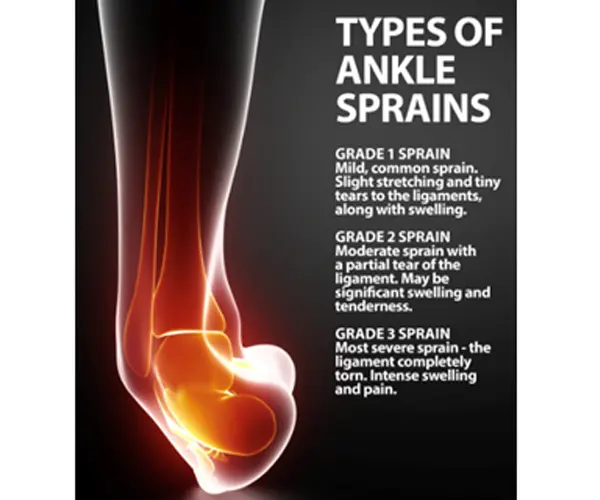Ankle Sprains
What’s Chronic Ankle Instability?
Chronic ankle instability is a condition characterized by recurring, often long-term ankle sprains or a persistent feeling of instability in the ankle joint. It typically occurs after an initial ankle sprain or injury that doesn’t fully heal or is not properly rehabilitated.
This condition can be quite bothersome and may lead to ongoing pain, weakness, and a higher risk of future ankle injuries.
Dr. Ryan M. Sherick at the Apex Foot & Ankle Institute in Thousand Oaks, California is an ankle sprain, and ankle instability expert who provides his patients with the most innovative ankle sprain non-surgical and surgical treatments available.


Chronic Ankle Instability can be categorized into two main types:
Symptoms and Treatment of Chronic Ankle Instability
The main symptoms of chronic ankle instability may include:
Treatment for chronic ankle instability may involve a combination of the following:

It’s essential to consult a healthcare professional, such as an orthopedic foot and ankle specialist or a sports medicine physician, if you suspect you have chronic ankle instability. Dr. Ryan M. Sherick at Apex Foot & Ankle Institute in Thousand Oaks, California can evaluate your condition and recommend an appropriate treatment plan to help you regain ankle stability and reduce the risk of future injuries.
Causes of Chronic Ankle Instability
Chronic ankle instability can be attributed to various factors, primarily stemming from a history of ankle sprains or injuries. The most common cause is an inadequately rehabilitated initial ankle sprain, where the damaged ligaments and joint structures do not fully heal or regain their strength and stability. Repeated ankle sprains further weaken the ligaments, potentially leading to chronic instability. Other contributing factors include anatomical variations, such as naturally loose ligaments, which make the ankle more susceptible to injury and instability. Additionally, muscle weakness, especially in the muscles responsible for ankle support and balance, can play a crucial role in chronic ankle instability. Poor proprioception, the body’s awareness of the ankle’s position in space, can further exacerbate the problem, making it challenging to maintain balance and stability. Understanding the underlying causes is crucial for developing effective treatment strategies to address chronic ankle instability and prevent future complications.
Diagnosing Chronic Ankle Instability
Diagnosing chronic ankle instability typically involves a thorough clinical evaluation, including a patient’s medical history and a physical examination to assess symptoms, joint laxity, and functional deficits. Imaging studies like X-rays or MRI scans may be used to identify structural abnormalities. Functional assessments, such as balance and proprioception tests, help determine the severity of the condition. This comprehensive approach aids in accurately diagnosing chronic ankle instability and tailoring appropriate treatment strategies.

Non-Surgical Chronic Ankle Instability Treatment
Non-surgical treatments for chronic ankle instability focus on addressing the condition through conservative means, avoiding the need for surgery. These approaches include:

Surgical Treatment for Ankle Instability Including Minimally Invasive Ankle Surgical Repair Options
Surgical treatment for ankle instability is typically considered when non-surgical approaches, such as physical therapy and bracing, prove ineffective, or when there is severe structural damage to the ankle joint. One common surgical procedure is ankle ligament reconstruction, where damaged or torn ligaments are repaired or replaced. In some cases, a surgical procedure called ankle arthroscopy may be used to assess and treat joint damage.
The ultimate goal of surgical intervention for ankle sprains is to restore stability, improve joint function, and reduce the risk of recurrent ankle sprains and ultimately arthritis risk. Successful surgery can help individuals regain their active lifestyles and enjoy a pain-free, stable ankle joint. Contact Dr. Ryan Sherick the best foot and ankle sports medicine specialist in Southern California and Westlake Village + surrounding areas.

